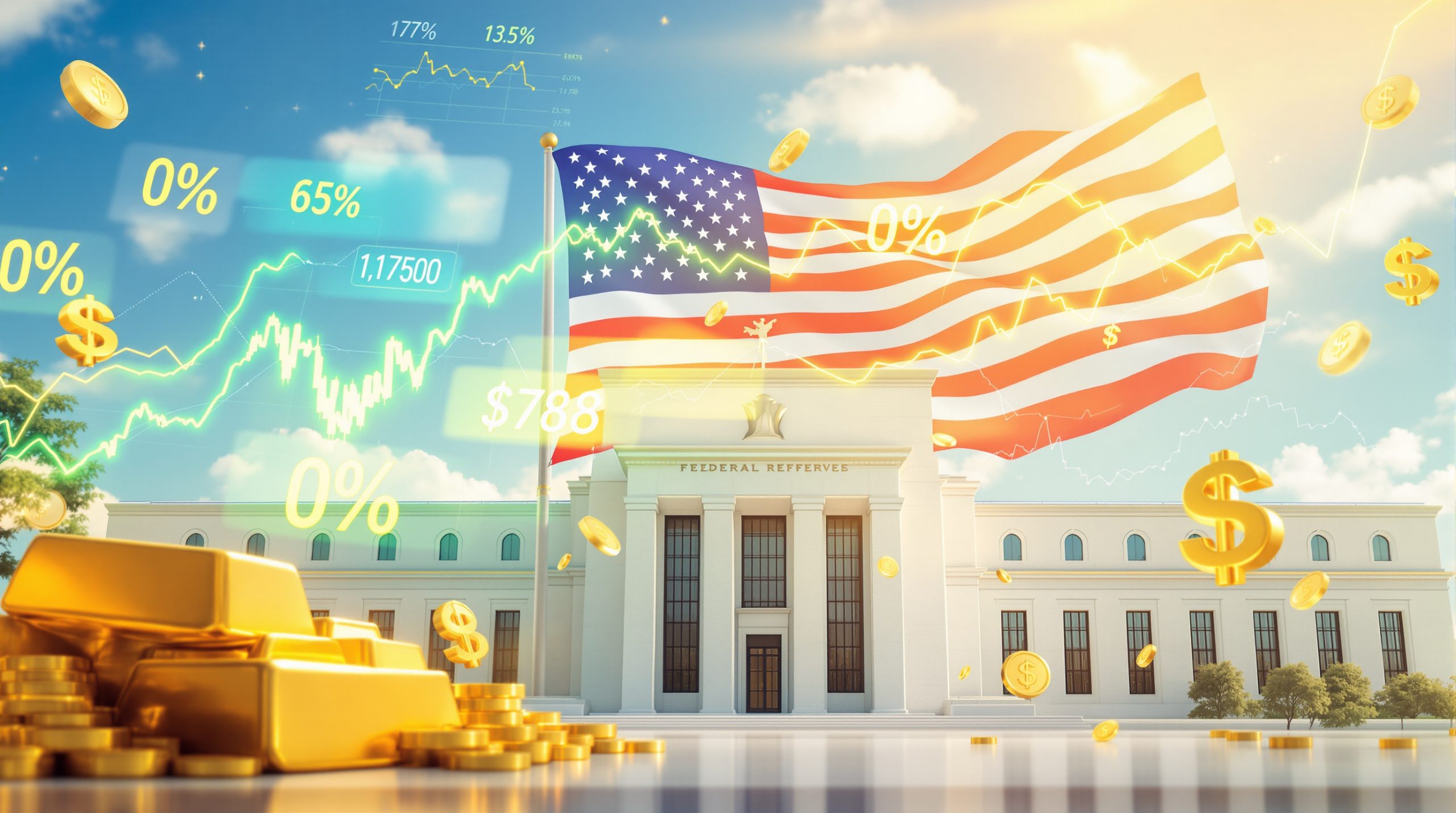How Are Global Trade Tensions Affecting Copper Prices?
Trump's New Tariff Threats and Market Response
Rising risk aversion in copper prices became evident following former President Trump's latest announcement on Saturday, July 12, 2025. The proposal includes a substantial 30% tariff on goods from Mexico and the European Union, scheduled to begin August 1, 2025, should he win the upcoming election.
This announcement represents a significant return to the aggressive trade stance Trump adopted in April 2025, creating immediate market uncertainty. According to SMM News (July 14, 2025), copper prices responded swiftly with LME copper falling 0.2% to $9,663/mt and SHFE copper dropping 0.27% to 78,320 yuan/mt on July 11, 2025, as markets anticipated the weekend announcement.
"Trump currently shows no signs of slowing down the trade war, and copper tariffs are high and implemented quickly, highlighting the pressure on copper prices," noted SMM analysts in their latest market assessment.
Historical data shows such announcements tend to create ripple effects throughout metal markets. The April 2025 trade policies, for instance, triggered a 5.8% copper price drop within just 48 hours, demonstrating the metal's acute sensitivity to US tariff impact on copper.
Impact of Trade Wars on Copper Market Dynamics
Copper's position as a globally traded commodity makes it particularly vulnerable to international trade disruptions. The metal serves as both an economic barometer and a direct participant in trade flows, amplifying the impact of tariff announcements.
When analyzing copper's response to trade tensions, market experts identify several key transmission mechanisms:
- Supply chain disruption: Tariffs raise import costs, potentially creating regional market fragmentation
- Market sentiment shifts: Trade uncertainty increases risk premiums in futures contracts
- Currency effects: Dollar strength during trade tensions often weighs on dollar-denominated commodities
- Physical premium changes: Regional arbitrage opportunities emerge as price disparities develop
These dynamics create a complex environment for copper traders, with prices increasingly reflecting geopolitical risk rather than pure supply-demand fundamentals.
What's Happening with Current Copper Market Fundamentals?
Supply-Side Analysis
The current copper market displays relatively loose supply conditions according to the latest industry analysis. "As delivery dates approached, suppliers had relatively abundant supplies, coupled with import window openings, resulting in overall loose conditions," reported SMM analysts (July 14, 2025).
This supply situation stems from several concurrent factors:
- Increased availability as delivery dates approach
- Open import windows creating additional supply avenues
- Favorable arbitrage opportunities between LME and SHFE markets
- Higher inventory levels at key warehouses
The Yangshan Copper Premium (a key indicator for Chinese imports) fell approximately 35% in June 2025 due to this oversupply situation, reflecting the abundance of material available to the world's largest copper consumer.
Industry experts note that while major disruptions are absent from current production landscapes, market participants should monitor potential weather-related challenges in Chile and Peru during the coming months, as these could rapidly shift the global copper supply forecast.
Demand Patterns and Buyer Behavior
Copper demand has shown interesting tactical patterns in recent trading sessions. On Thursday, July 10, copper prices stopped falling and rebounded, stimulating downstream buyers to actively replenish at lower price points. However, by Friday, July 11, purchasing sentiment had significantly weakened (SMM News, July 14, 2025).
This pattern reveals the opportunistic behavior typical of price-sensitive buyers in the current market:
- Tactical purchasing: Buyers swiftly move in when prices find support levels
- Weak follow-through: Limited sustained buying interest beyond initial price dips
- Regional variations: European buyers show more caution than Asian counterparts
- End-use sector differences: Construction demand remains steadier than consumer electronics
The rapid deterioration in buying sentiment from Thursday to Friday highlights the cautious approach many copper consumers are taking amid the current rising risk aversion in copper prices.
How Are Macroeconomic Factors Influencing Copper Prices?
Federal Reserve Policy Implications
Recent statements from Federal Reserve officials suggest that the latest tariff threats might delay previously anticipated interest rate cuts (SMM News, July 14, 2025). This potential shift in monetary policy timing has significant implications for copper prices.
The relationship between Fed policy and copper prices operates through several channels:
- Dollar strength: Higher rates typically strengthen the dollar, making dollar-denominated copper more expensive for foreign buyers
- Financing costs: Higher rates increase inventory carrying costs for physical copper
- Economic growth expectations: Delayed rate cuts often signal concerns about inflation or economic resilience
The copper-dollar correlation has been particularly strong in recent months, with a 90-day inverse correlation coefficient of -0.82, indicating that copper prices have moved opposite to dollar strength with remarkable consistency.
Historical parallels show the potential impact of Fed policy shifts. During the 2015-2018 rate hiking cycle, copper prices declined approximately 18% as monetary tightening progressed, demonstrating the metal's sensitivity to interest rate environments.
Global Economic Indicators to Watch
While copper prices respond to immediate trade and monetary policy shifts, several longer-term economic indicators serve as critical signposts for future price direction:
- Manufacturing PMI trends: As a leading indicator of industrial activity
- Construction sector metrics: Housing starts and infrastructure investments
- Electric vehicle production: EV manufacturing uses 2-3× more copper than conventional vehicles
- Grid investments: Renewable energy integration requires substantial copper inputs
- Chinese property sector: Accounts for roughly 20% of global copper demand
These factors collectively shape the demand landscape for copper, making their monitoring essential for understanding the metal's medium-term price trajectory amid rising risk aversion in copper prices.
What Technical Indicators Are Showing for Copper Markets?
Price Action Analysis
Recent technical indicators reveal significant price movement within defined ranges. On July 11, 2025, LME copper traded between $9,610-$9,694/mt, while the SHFE copper contract fluctuated between 78,040-78,460 yuan/mt (SMM News, July 14, 2025).
Key technical levels currently influencing market behavior include:
- Support level: LME copper finding support around $9,500/mt (coinciding with the 200-day moving average)
- Resistance level: Upper bound around $9,800/mt creating a ceiling for recent price action
- Price structure: Development of lower highs suggesting bearish momentum
- Volume patterns: Increasing volume on down days confirming selling pressure
These technical indicators align with fundamental factors to suggest continued caution among market participants, with many traders waiting for clearer directional signals before establishing significant positions.
Market Positioning and Sentiment
Trading activity metrics provide additional insights into market sentiment. On July 11, 2025:
- LME trading volume: 20,000 lots
- SHFE trading volume: 28,000 lots
- LME open interest: 281,000 lots
- SHFE open interest: 175,000 lots
According to SMM News (July 14, 2025), "Risk aversion rose, pressuring copper prices after tariff and Fed statements." This sentiment shift appears in positioning data, with open interest falling approximately 7% weekly despite price drops, indicating long liquidation rather than new short positioning.
This pattern suggests market participants are reducing exposure rather than actively betting on further price declines—a more defensive than aggressive bearish stance amid rising risk aversion in copper prices.
What's the Outlook for Copper Prices in the Near Term?
Short-Term Price Projections
Based on current market conditions, copper prices are "expected to continue declining" in the immediate term (SMM News, July 14, 2025). This projection stems from the confluence of trade tensions, potential monetary policy shifts, and relatively loose supply fundamentals.
Potential downside targets include:
- Initial support: $9,500/mt (technical support level)
- Secondary target: $9,400/mt if trade tensions escalate further
- Major support: $9,200/mt (previous swing low from early 2025)
For price stabilization to occur, markets would likely need to see either a de-escalation in trade rhetoric, stronger-than-expected Chinese stimulus measures, or significant supply disruptions—none of which appear imminent according to current analysis.
Risk Factors That Could Shift the Market
While the short-term outlook leans bearish, several risk factors could rapidly shift market direction:
- Trade policy developments: Clarification or moderation of proposed tariffs
- Supply disruptions: Historical data shows unexpected disruptions can cause rapid price spikes (e.g., 2024 Chile mine strikes triggered 12% price increases within 72 hours)
- Chinese policy shifts: Potential State Reserve Bureau buying or infrastructure stimulus announcements
- Federal Reserve communications: Clear signals on rate path despite trade uncertainties
- Technical breakouts: Movement above $9,800/mt could trigger algorithmic buying
Investors should monitor these factors closely, as copper's status as both an industrial commodity and a financial asset makes it particularly responsive to shifts in both fundamental and speculative drivers.
FAQ: Copper Market Trends and Risk Factors
How do tariffs specifically impact copper prices?
Tariffs affect copper markets through multiple mechanisms:
- Direct trade flows: Tariffs on copper products (wire, tube, etc.) directly impact pricing and volumes
- End-use demand: Tariffs on copper-intensive goods (electronics, vehicles) reduce consumption
- Regional premiums: Physical delivery premiums often widen in tariff-affected regions
- Supply chain adjustments: Production relocations create temporary inefficiencies and costs
The 30% tariff proposal's impact would vary by region and copper product category, potentially creating significant market fragmentation between North American, European, and Asian markets.
What indicators should investors monitor for copper price reversals?
To identify potential turning points in copper price trends, investors should focus on:
- Chinese property market metrics: Sales, starts, and completions data
- Exchange inventory movements: Sudden drawdowns often precede price rallies
- Canceled warrants ratio: Increasing cancellations signal physical demand
- Positioning data: Extreme speculative positioning often precedes reversals
- Time spreads: Backwardation (spot premium) typically indicates physical tightness
A combination of these indicators turning positive would provide a stronger signal than any single metric in isolation.
How does copper price volatility compare to other base metals in the current environment?
Copper has historically shown moderate volatility compared to other base metals, but current conditions have altered this relationship:
- Nickel: Maintains highest volatility due to structural market changes
- Tin: Shows second-highest price fluctuations due to concentrated production
- Copper: Currently displaying elevated volatility relative to its historical patterns
- Aluminum: Generally less volatile due to wider production distribution
- Zinc & Lead: Typically show lower volatility in most market conditions
The rising risk aversion in copper prices has placed its recent volatility closer to nickel than its traditional mid-range position, reflecting heightened market uncertainty.
Key Copper Market Statistics for July 2025
| Metric | LME Copper | SHFE Copper |
|---|---|---|
| Recent Price Range | $9,610-$9,694/mt | 78,040-78,460 yuan/mt |
| Latest Close | $9,663/mt | 78,320 yuan/mt |
| Daily Change | -0.2% | -0.27% |
| Trading Volume | 20,000 lots | 28,000 lots |
| Open Interest | 281,000 lots | 175,000 lots |
| YTD Performance | +2.3% | +1.8% |
| 30-Day Volatility | 22.5% | 19.7% |
Disclaimer: The information provided in this article is based on market data as of July 14, 2025, and reflects current conditions. Future developments in trade policy, economic indicators, or supply-demand fundamentals may significantly alter the outlook. Investors should conduct their own research and consider their risk tolerance before making investment decisions based on these projections.
For those interested in exploring potential investment opportunities in this volatile market, various copper investment strategies could help navigate the current uncertainties. Additionally, understanding copper price predictions and the factors driving surging copper demand remain crucial for investors looking to position themselves effectively in this complex market environment.
Interested in Receiving Real-Time Alerts on Mineral Discoveries?
Discovery Alert's proprietary Discovery IQ model instantly identifies significant ASX mineral discoveries, turning complex data into actionable insights for both copper and other mineral investments. Explore why major mineral discoveries can lead to exceptional returns by visiting the dedicated discoveries page and begin your 30-day free trial today.




